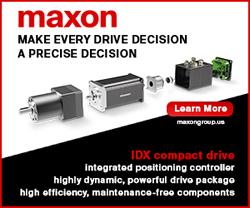Teal Group Predicts Worldwide Civil Drone Production Will Soar $73.5 Billion Over the Next Decade
Teal Group's 2017 World Civil UAS Market Profile and Forecast forecasts that non-military UAS production will total $73.5 billion in the next decade, soaring from $2.8 billion worldwide in 2017 to $11.8 billion in 2026, a 15.5 % compound annual growth rate in constant dollars.
PARIS, June 19, 2017 /PRNewswire/ -- Civil Unmanned Aerial Systems (UAS) promise to be the most dynamic growth sector of the world aerospace industry this decade, report Teal analysts in their latest market analysis, during the Paris Air Show taking place June 19-25 at Paris-Le Bourget Airport.
"The civil drone market is ready to take off," said Philip Finnegan, Teal Group's director of corporate analysis and author of the study. Eased airspace regulations, a flood of outside investment, new UAS service offerings and the entry of leading technology companies are setting the stage for very rapid growth."
Teal Group's 2017 World Civil UAS Market Profile and Forecast forecasts that non-military UAS production will total $73.5 billion in the next decade, soaring from $2.8 billion worldwide in 2017 to $11.8 billion in 2026, a 15.5 % compound annual growth rate in constant dollars. The forecast includes commercial, consumer and civil government systems. Teal Group, an independent aerospace and defense research and analysis company, has provided support for the FAA in the preparation of its annual commercial UAS forecast.
Commercial use will be the fastest growing civil segment, rising more than twelvefold from $512 million in 2017 to $6.5 billion. "The growing promise of the civil market is attracting the world's leading technology companies, driving ever faster development of systems and business applications," said Finnegan. Firms in traditional aerospace, data analysis, semiconductors, telecommunications are all driving aggressively into the market.
Technology companies and venture capitalists have poured $1.3 billion into investments in drone startups since 2013, according to the Teal Group study. In addition, there have been numerous acquisitions of UAS companies by Intel, Verizon, Facebook and Google. Other technology leaders such as Amazon and General Electric have focused on building up their own internal capabilities.
Construction will lead the commercial UAS market. All 10 of the largest worldwide construction firms are deploying or experimenting with systems and will be able to quickly deploy fleets worldwide. The three largest construction equipment suppliers are each working with a drone firm to provide everything from off-the-shelf systems to full end-to-end service.
Agriculture, which will adopt UAS more slowly than construction, will still rank second worldwide over the next decade. Gradual adoption by skeptical farmers and improved technology will allow it to reach its full potential after the forecast.
Low-cost, high-altitude, long endurance UAS for internet promise to create an entirely new segment of the market. Airbus has already begun low rate production of solar-powered UAS and Facebook is also working on its own system. The technology seeks to bring the internet to areas of the world with no service.
Other important commercial segments, ranked in order by ten-year size, include energy, general photography such as real estate marketing, and insurance.
The Teal Group is an aerospace and defense market analysis firm based in Fairfax, Virginia USA. It provides competitive intelligence to industry and governments worldwide.
Featured Product

